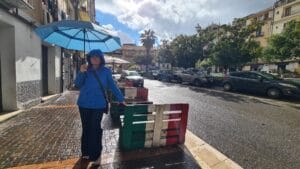
Lamezia Terme: The Blog That Nearly Didn’t Happen – By Andy
A2Z Wander | Our Blog A Rainy Arrival (and a Slight Hangover) Lamezia Terme almost didn’t get its own blog post. There’s only so many

“We’re writing to inform you that the Municipality of Lucca has communicated possible disruptions to the water supply on 5th March from 14.00 to 07.00 on 6th March.”
A message from our next accommodation before arriving in Lucca.
Oh. Erm… well, OK. If we shower before leaving Rapallo, we should be fine—we’re only staying one night, after all. With this mildly ominous message in mind, we arrive in Lucca, not really sure whether this will be a minor inconvenience or an impromptu survival challenge.
On arrival, there were no dramatic fountains of water shooting into the air, and no parched tourists clutching empty bottles, so we set off in hopeful optimism to find our B&B.
On this trip, with the weight of our bags and our non-driver status, the non-negotiable rule is simple: never stay more than a 15-minute walk from the train station. This time, the walk feels more like a sightseeing tour.
Lucca, one of Italy’s best-preserved medieval cities, sits on a fertile plain that stretches towards the Ligurian Sea, nestled between the Serchio River and the Apuan Alps, with the Pisan Mountain Range watching over it.
The moment you step out of the train station, south of the city, Lucca makes an impression. Looming ahead are the city’s defining feature—the mighty 16th-century walls. These imposing ramparts, standing 12 metres high and stretching for 4.2 kilometres, remain entirely intact.
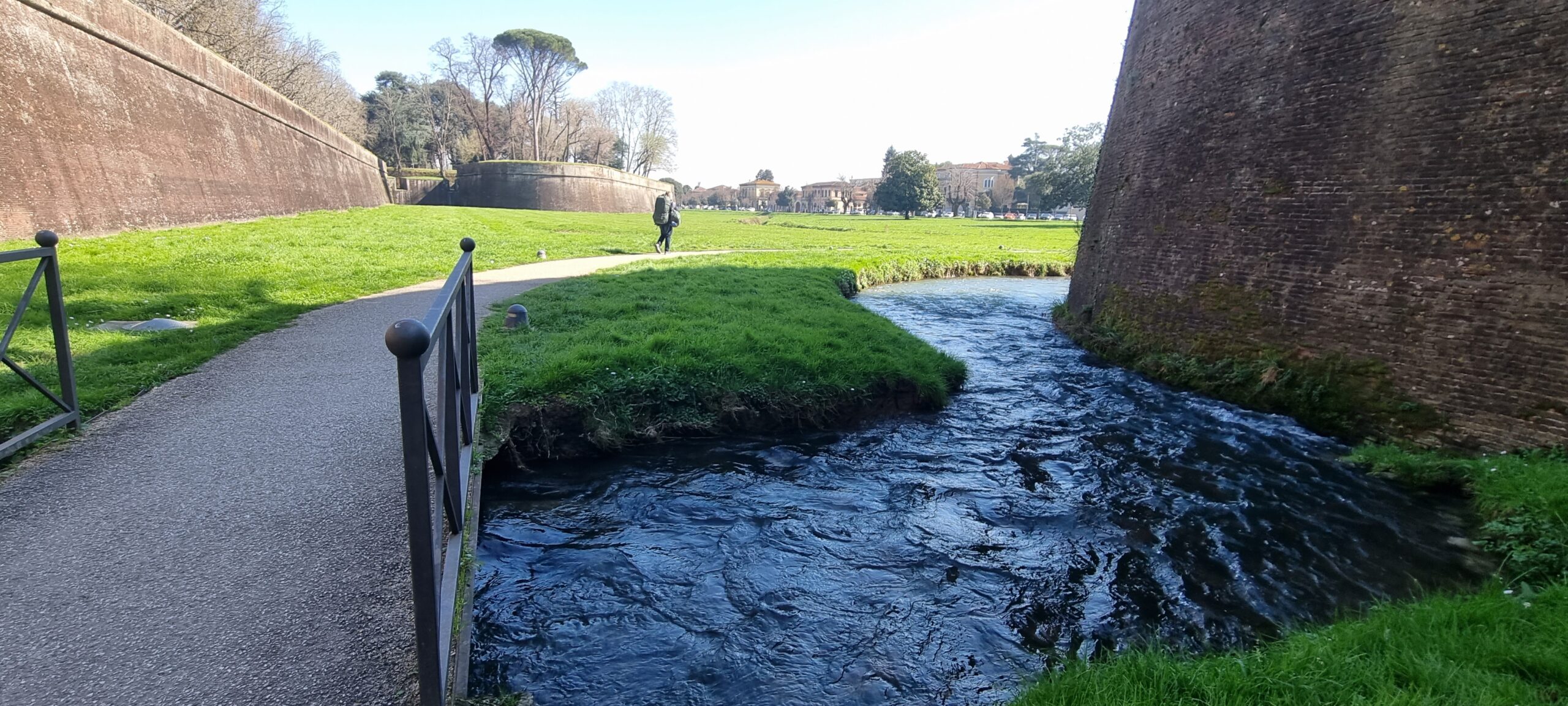
Once built for defence, they’ve since been repurposed into something far more civilised—a tree-lined promenade with sweeping views, each of the four sides lined with a different plant species. A place for socialising, jogging (if you’re Andy), or strolling (if you’re Zoe). They change with the seasons, forming the ideal backdrop for the classic Italian passeggiata. A full circuit takes about 45 minutes, but if you’re like me and prone to stopping for photos every five steps, expect it to take significantly longer. For those who prefer a more leisurely (or lazy) approach, renting a quadricycle to pootle around the walls seems to be a popular choice.

 Lucca invites slow exploration. Its labyrinth of narrow lanes and hidden passageways is too tight for cars, so bicycles reign supreme. Combine this with the city’s rich cultural and intellectual history, and it’s easy to see how Lucca earned one of its nicknames—the ‘Cambridge of Tuscany.’
Lucca invites slow exploration. Its labyrinth of narrow lanes and hidden passageways is too tight for cars, so bicycles reign supreme. Combine this with the city’s rich cultural and intellectual history, and it’s easy to see how Lucca earned one of its nicknames—the ‘Cambridge of Tuscany.’
And then, of course, the sun decides to come out, turning our picturesque walk into a sweaty, slightly regrettable endurance event. Why didn’t we get a taxi?
We’re staying in an old palazzo, Corte Meraviglia Relais. Excited for a taste of Italian grandeur, we soon discover that looking for a palazzo in Italy is like looking for a canal in Venice—they’re everywhere. The photos we’d studied in preparation fail to warn us that our entrance is, in fact, a completely unremarkable brown door that we walk past multiple times before realising it’s the one. And naturally, once found, it seems glaringly obvious (something we would become accustomed to.)

Relieved to be free of our bags, we’re warmly welcomed by Paolo, who ushers us into a beautiful, airy palazzo built around a lofty central courtyard. A small outdoor terraced area, dotted with bistro-style tables, leads to a much larger gated garden—a peaceful, green oasis. Our room, or rather apartment, is huge. There’s a kitchen, though there’s little chance of us cooking when free coffee is available in reception until 11pm—just take the key and help yourself.
He explains that we don’t need to pay now because should the water disappear, so will part of our bill. Every little helps and all that!
A quick change and an evening of exploring lay ahead. That is, of course, assuming the water is still running…
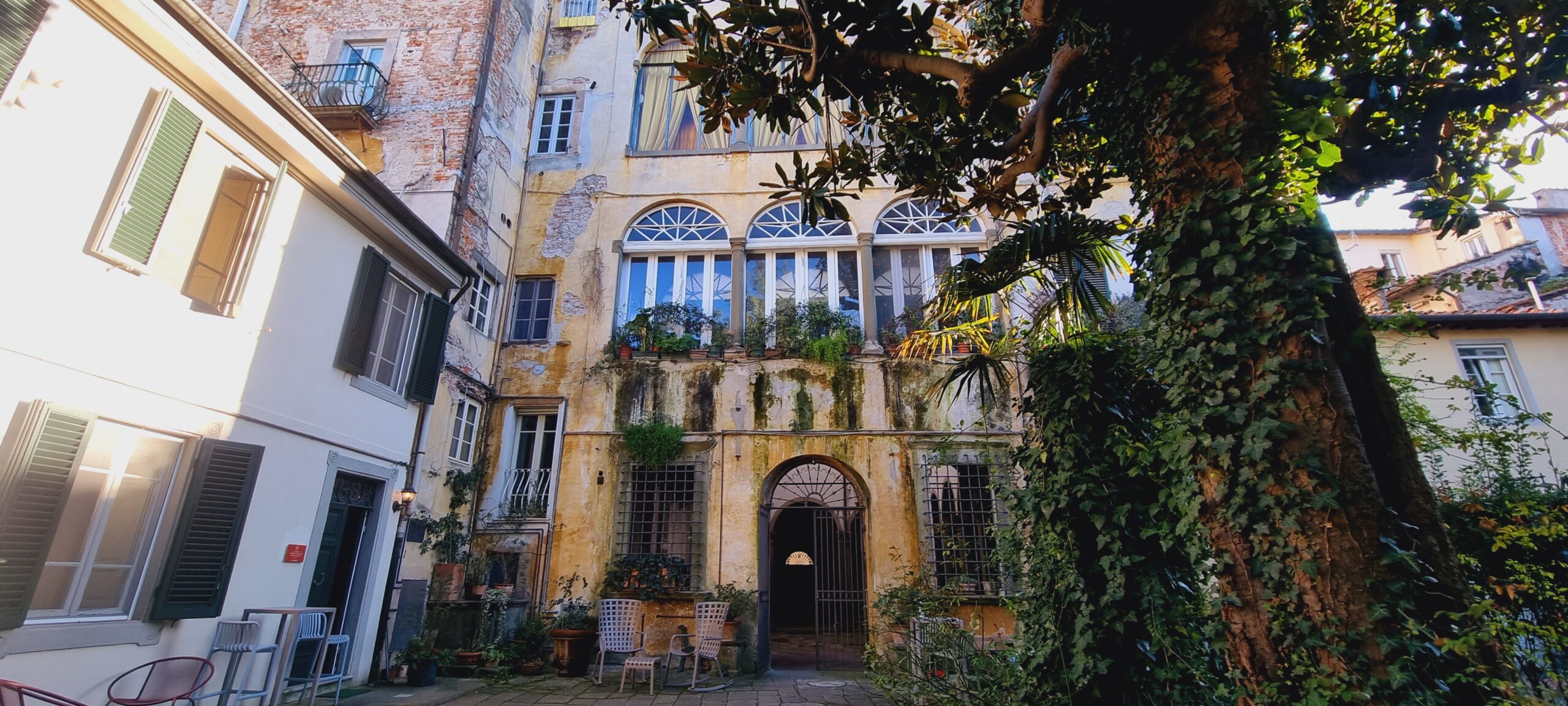
The second of Lucca’s nicknames we were to learn is Città d’Arte, thanks not only to its walls but also to its historic centre and architectural monuments. Possibly most famous is the unique, oval-shaped Piazza dell’Anfiteatro. Once a Roman amphitheatre, its remains lie below street level, and it’s now lined by cafés and private homes. You enter through one of four gates, each providing a beautiful natural picture frame to the piazza beyond.

Though known as the bustling heart of the town, we were somewhat surprised to find it almost empty, with just one café open. Undeniably picturesque, it almost seemed to change as the sun moved around, highlighting different parts before our eyes. It just lacked a bit of atmosphere. Maybe because it was 5 pm, maybe because it was Wednesday—we weren’t sure. We returned later in the evening, but still, not much was happening. It was a similar story the next morning. It’s definitely worth seeing, but without life, it didn’t quite have the impact we were expecting.
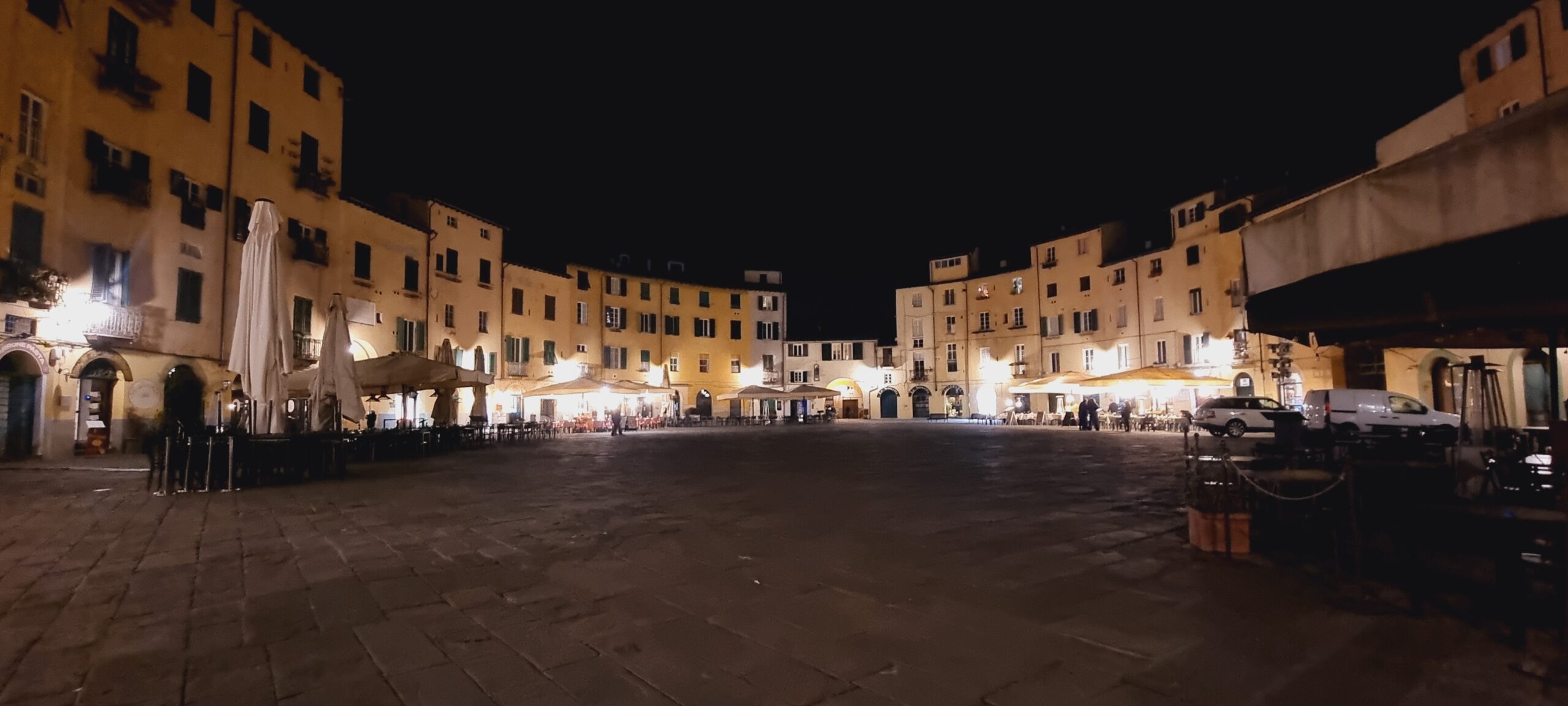
Leaving the quiet piazza behind, we wandered into the heart of Lucca’s retail charm: Via Fillungo, the main shopping street. Shopping, like dining out, feels effortlessly civilised here. It’s a delightful mix of ancient and modern. Shops retain their original signage, so stepping inside can often be a surprise. It’s elegant, understated and charming. Trendy boutiques sit happily alongside traditional pasticcerias and intimate bars, almost inviting you to slow down and rest your feet.
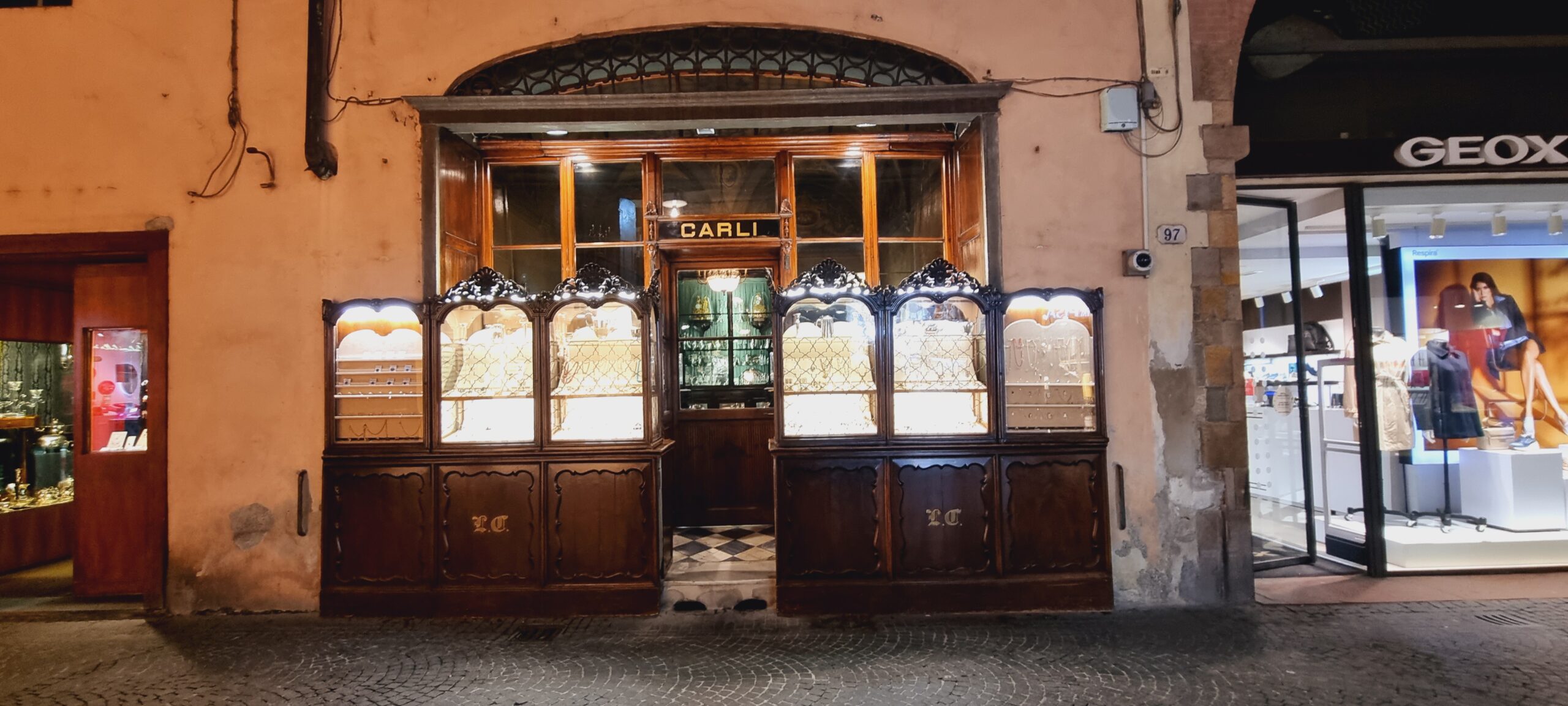
 In search of refreshment and armed with my lists and maps, we had to laugh when two of the bars I had highlighted were somewhat less attractive than they appeared online. Wandering further, we found the likely source of the water problem. An entire section of road in one of the central spots had been dug up, men in dayglow clothing either smoking or watching while the unlucky one was down in the hole with a drill.
In search of refreshment and armed with my lists and maps, we had to laugh when two of the bars I had highlighted were somewhat less attractive than they appeared online. Wandering further, we found the likely source of the water problem. An entire section of road in one of the central spots had been dug up, men in dayglow clothing either smoking or watching while the unlucky one was down in the hole with a drill.
We did find a craft beer bar that was just opening, and it was just far back enough for the drilling not to dominate our conversation. We watched as locals passed by with large empty bottles, clearly prepared for the ensuing disruption. We wondered how our palazzo would fare, how long the drilling might last, and what effect it might have on the local businesses.
We also mused over how others sat right next to the works, seemingly unbothered, shouting louder to be heard over the noise, unmoved by the dust and unperturbed by the less-than-pretty views. It was a topic we would revisit several times.
Also nicknamed the “town of a hundred churches” due to its remarkable number of places of worship, Lucca has plenty to entertain even the most avid church visitor. In the short time we were there, my personal favourite was Piazza San Michele, home to the imposing Romanesque and Gothic Chiesa di San Michele in Foro. Unfortunately, it was closed by the time we arrived, but at night, in the quiet time just after aperitivo but before dinner, it was magical in the evening light.

Bordered on one side by the bell tower and surrounded by medieval buildings, it stood majestic in the centre of the square. In the far corner, with a prime view, a charming café glowed against the night sky, a lone customer sipping a glass of wine and watching the world go by. In that moment, it felt like I understood a bit of Lucca’s magic.


Lucca is the birthplace of Giacomo Puccini, the world-famous composer of operas ‘La Boheme’, ‘Tosca’ and ‘Madama Butterfly’. As we wandered on from the Puccini statue—seated and smoking a cigar outside his former residence, now a museum—we stumbled across Buca di Sant’Antonio. I’m a sucker for dimly lit, cosy places, and my foodie radar was triggered as we passed by this unassuming (from the outside) restaurant. A closer look revealed a welcoming entrance that led into a fire-lit lounge bar, which opened out into a large dining room filled with copper pans hanging from the wood-beamed ceiling. That’s when we noticed the Michelin sticker, formal menus, and attire of the other diners. Thank goodness we’d changed out of our sweaty travel-day clothes!

It seemed we were out of luck when they explained they were fully booked (they had water, we were reliably informed). As we were leaving and discussing Plan B, we were called back—there’d been a cancellation. Our luck was in.

This is a restaurant with a story. As we sipped our complimentary glasses of prosecco, we learned from the menu that the restaurant dates back to 1782, specifically to a document drawn up to prohibit the sale of ‘foreign’ wines in the state. Tavernas were to be supervised, including the Osteria a Sant’Antonio (buca meaning osteria or tavern in ancient Tuscan). During the 19th century, it also operated as an inn, a shed, and a stable for the nearby Horse Post Station.
The ambience was wonderful, the history seemed to seep out of the walls—or perhaps from the pots on the ceiling. Clearly beloved by the older locals, the traditional Lucchese dishes were good, but just missing that extra something to make them great. Andy had a cardoon omelette (a type of artichoke stalk), followed by a mix of meats including fried rabbit, veal brain, and cutlet. I went for courgette flowers stuffed with ricotta, and baked cod with chickpeas and olive oil. Simplicity itself. Again, just lacking the finesse to match the ambience, service, and price tag.

Apparently, Princess Margaret loved the farro dish here, though I couldn’t find any proof; I rather hope it’s true. Lucca is serious about its food, full of discreet villas and palazzi, and definitely has an upmarket feel, so maybe she did.
 The next morning, with a few hours to spare before heading back to the station, we set out for our must-do activity and another symbol of the city—the Guinigi Tower. Built by a powerful family of merchants in the 15th century, it stands 45 metres high, topped by a rooftop garden where centuries-old holm oaks still grow. It’s completely unique and calls out to be climbed.
The next morning, with a few hours to spare before heading back to the station, we set out for our must-do activity and another symbol of the city—the Guinigi Tower. Built by a powerful family of merchants in the 15th century, it stands 45 metres high, topped by a rooftop garden where centuries-old holm oaks still grow. It’s completely unique and calls out to be climbed.
Despite my fear of heights, I was determined to enjoy this extraordinary sight, so up we went. The 230 steps are interspersed with solid platform floors, giving you both a breather and a chance to admire the changing views. For those who don’t like heights, the enclosed stairs mean you can’t see all the way down—reassuringly solid and manageable.
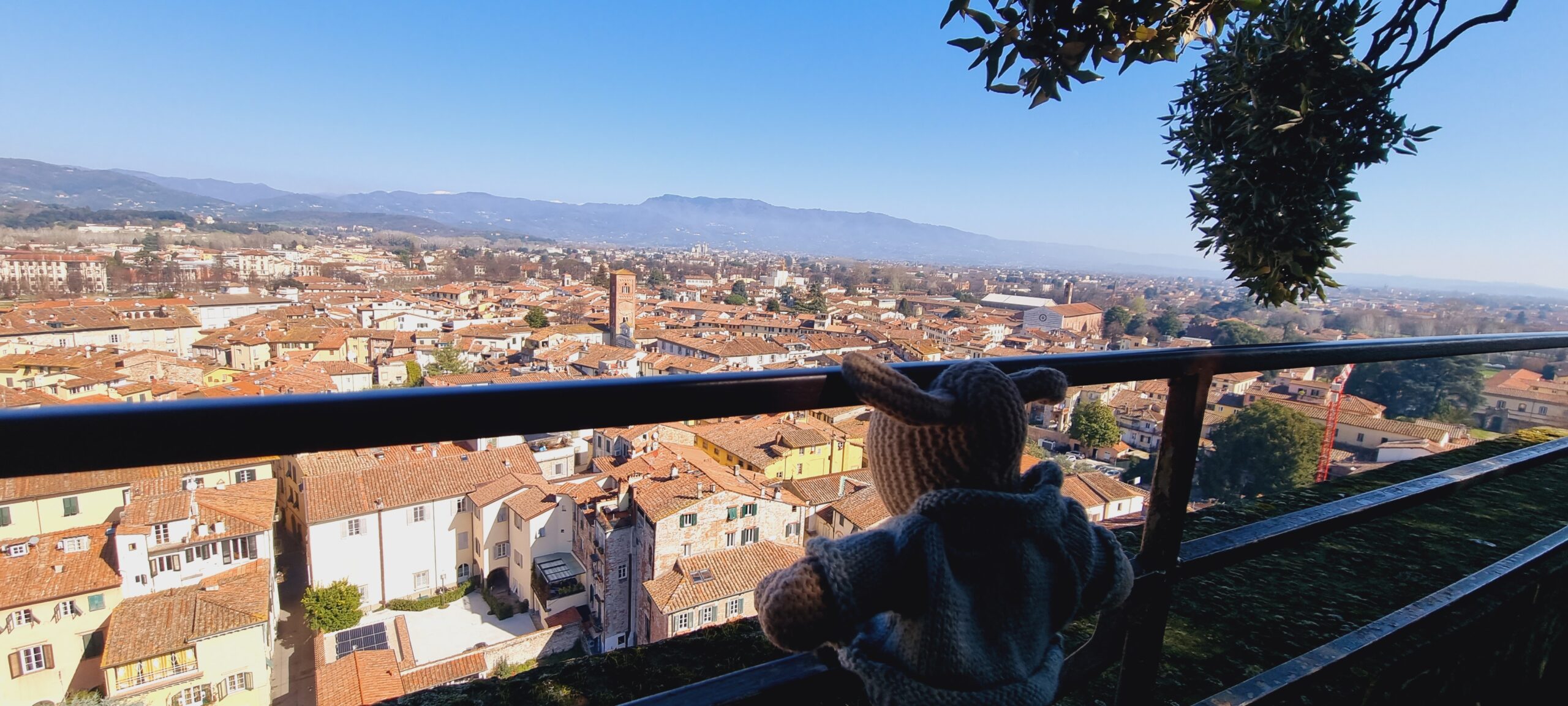
The view from the top is spectacular. The historic old town and its orange roofs glow in the sunshine, surrounded by distant hills. It really is breathtaking. Unfortunately, we managed to visit at the same time as a large group of loud tourists, oblivious to the signs and any sense of common courtesy, who decided to climb the ancient trees for selfies.
Biting our tongues, marvelling at their stupidity and wondering if they’d ever notice the clear warning signs that would now feature in their photos, we bided our time. And then it was magical. The wind in the trees, their canopies offering welcome shade from the late-morning sun, and little spots to sit and take in the panorama. We stayed as long as was polite, eager to soak in the Tuscan countryside and marvel at this architectural feat. For both of us, it will remain our lasting impression of Lucca.

The wealth of Lucca, like that of Florence, was based on banking and its silk industry. As early as the 12th century, its bankers were plying the Mediterranean or travelling north to Bruges, Antwerp and London, buying and selling silk and woollen cloth. Successful families like the Guinigi built ostentatious tower-houses to display their power and prestige. In the Middle Ages, Lucca had more than 130 towers. Only two remain today. Many were cut down or demolished—some even collapsed due to excessive height, much to the satisfaction of rival families.

If you have time, a combined ticket also includes entry to the botanical gardens and the 50-metre Torre delle Ore (Clock Tower), also known as the tower of struggles due to long-standing disputes over its ownership. The bells still ring using ‘alla romana’ timings—a day divided into four parts of six hours each.
Back at the B&B, we were greeted by an older Italian couple (possibly Paolo’s parents) who happened to be standing in front of our luggage. I tried my best, in very basic Italian, to explain that we were collecting our bags. There was lots of smiling, pointing, shouting to the backroom for a staff member, and then a full conversation in Italian, of which I caught about four words. Were we going to the train station? Sì. Then came well wishes for our onward journey. Grazie mille. And, in a moment of pure Italian grandmotherly care, she reached over and tightened my hood and scarf—clearly worried I might fall victim to a blast of colpo d’aria if my neck was exposed. I managed a piacere (nice to meet you) and hoped it was formal enough not to offend.
 As we made our way back to the station, bags in tow and scarf expertly adjusted by a concerned Italian stranger, we passed the Duomo —and contemplated a quick visit. But train schedules in mind we decided against it. Not that we would’ve made it through the narrow entrance anyway—we’ve become so used to getting stuck in tiny single doors, it’s actually become quite amusing.
As we made our way back to the station, bags in tow and scarf expertly adjusted by a concerned Italian stranger, we passed the Duomo —and contemplated a quick visit. But train schedules in mind we decided against it. Not that we would’ve made it through the narrow entrance anyway—we’ve become so used to getting stuck in tiny single doors, it’s actually become quite amusing.
Hoping to avoid lugging ourselves up and over the imposing 12-metre-high walls, we spotted a tunnel that led us under the city and across what may once have been a moat—or perhaps just another clever medieval reminder that water is always flowing, even when the pipes aren’t.
We’d arrived expecting a minor plumbing disaster and a quick stopover. Instead, we left with a full appreciation for a city that drips with elegance, floods you with history, and trickles into your memory with quiet charm. Lucca may not have always had running water, but it flowed in all the ways that count.
Follow us on instagram @a2z.wander

A2Z Wander | Our Blog A Rainy Arrival (and a Slight Hangover) Lamezia Terme almost didn’t get its own blog post. There’s only so many
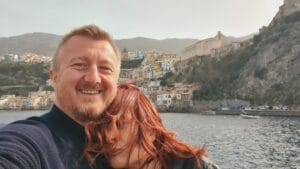
A2Z Wander | Our Blog A short coastal train ride punctuated by dramatic thunderclaps brought us further down into Calabria to a town called Scilla.
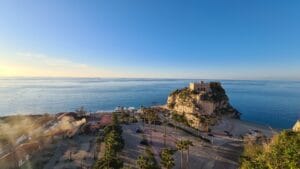
A2Z Wander | Our Blog This is quite the introduction to the town of Tropea… This is the view from Belvedere Piazza del Cannone in

A2Z Wander | Our Blog Three weeks into the trip, and we were finally swapping wheels for waves, boarding our first boat along the coast
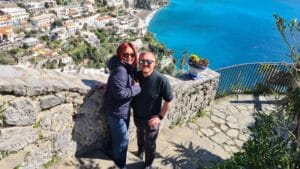
A2Z Wander | Our Blog With Sorrento in our rear-view mirror and the sea glittering to our right, we eased into the Amalfi Coast Drive,

A2Z Wander | Our Blog Naples left its indelible mark on us. We were sad to be leaving with so much still unexplored. But, if